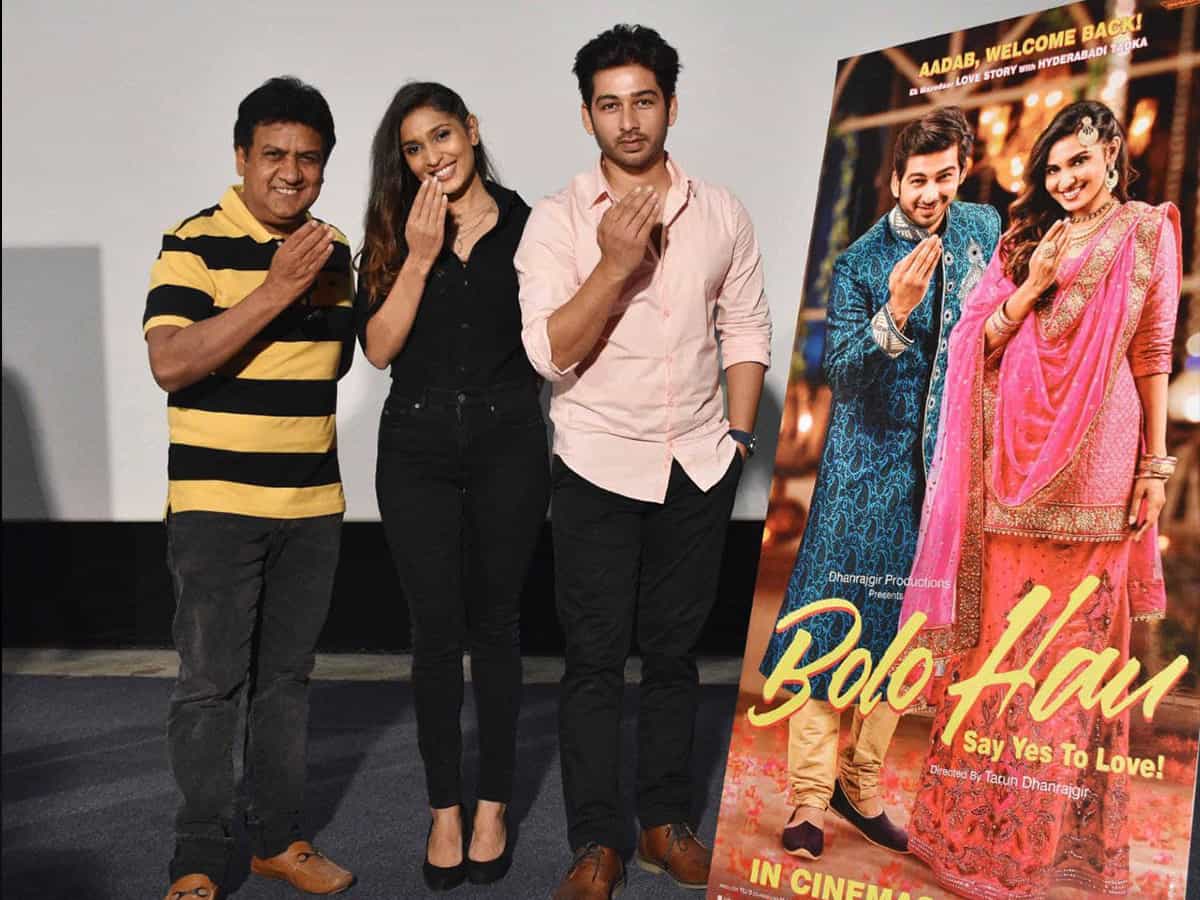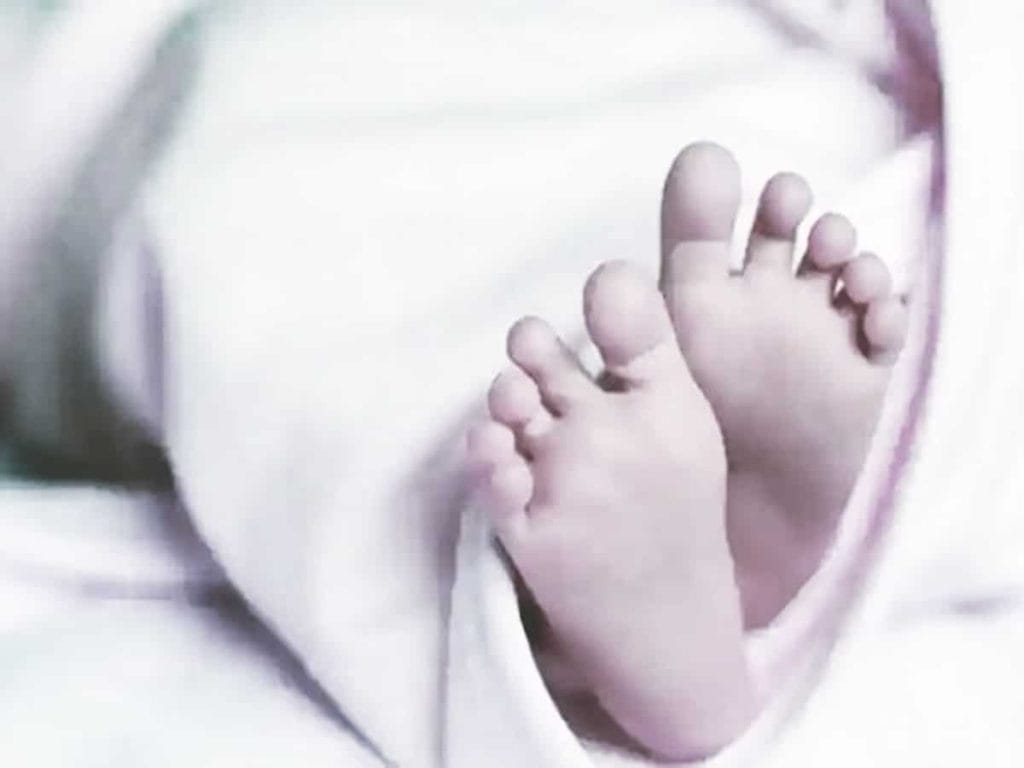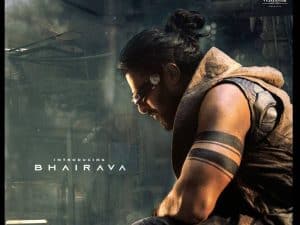Hyderabad: In recent memory, movies from our city have more or less become a caricature of sorts, thanks to popular culture turning Dakhni (or Hyderabadi), our language which is spoken across the Deccan, into a vernacular for comic relief. The Angrez is perhaps the best example that I can think of.
However, at a time when there is a growing assertiveness of Dakhni language in the south, Tarun Dhanrajgir’s Bolo Hau is a refreshing movie that Hyderabadis will perhaps enjoy. While it does comprise the typical storyline of an elite woman falling in love with a young middle-class man, the story adds a local touch of dealing with social ills that has remained in Hyderabad’s underbelly; particularly class divisions from the pre-independence era.
More importantly, Bolo Hau, though not exactly a masterpiece, is a step in the right direction, as Tarun Dhanrajgir’s embraces Dakhni, and uses it as an anchor to deliver typical Hyderabadi dialogues and punchlines. Some of them, though a little cringe-worthy, are in fact well done and will make audiences laugh. The inclusion of the well-known character ‘Gullu Dada’ (played by actor Adnan Sajid Khan) also adds a little flavour.
But adding characters like that of ‘Gullu Dada’ also takes away the seriousness from the movie, which has great potential to actually decode and highlight the class divisions that exist between Jagirdar (state appointed revenue collectors in the erstwhile princely state of Hyderabad run by the Nizams) families and the others. Bolo Hau in fact goes a little deep, by showing us conversations between those who generationally have been serving former Jagirdar or landlord families.
The storyline
Salman (Ankit Rathi) is a typical middle-class young man, who comes across Rukhsar (Jahnavi Dhanrajgir) at a wedding. The latter belongs to a ‘Nawab’ or Jagirdar family, but in spite of them coming from different worlds, they fall in love, in typical Hyderabadi style. My only complaint, if any in this portrayal, would be against young men from the city to shed their patriarchy, because the movie captures it well.
Problem arises at parallel when Rukhsar is also spotted by Khurshid Ali Khan (Adnan Sajid Khan), who wants her hand in marriage. The messenger who carries around word to fix marriages is played by a transgender character, which is rather well done. The movie is anchored on Pasha (Priya Nigam), Rukhsar’s mother, who is a symbol of the decadent Nawabs from Hyderabad who once held sway under the Asaf Jahi Nizams (1724-1948).
Expectedly, the family doesn’t want the two lovers to get together, but Rukhsar’s two brothers, Bade Nawab and Chote Nawab, want her to marry the over-the-top ‘Gullu Baba’, given that he promises them monetary help as part of the marriage deal. That is where the story goes into the social aspect. You see, Rukhsar’s family has a nice large house in Hyderabad’s Tappachabutra. However, it is a house of cards, as the family is not doing too well, with two brothers reeling under debt.
Pasha in fact rejects a suitor who she considers beneath her class, and is unwilling to let her daughter marry anyone below their social class. What is interesting is the accurate portrayal of the house helps, Gaffar Ali (played by the brilliant Hyderabadi stand up Munawwar Ali Mukhtasar) and Haleema Bi. The latter in fact laments at the mistreatment she faces often in spite of slaving for years.
Language love
What is heartening with Bolo Hau is the way Dakhni is used throughout, including the songs, with no frills. From dialogues like “Aidi kunda” (lazy person) to words like “Bhampte” (mocking), the movie is a step in the right direction for Dakhni as a language.
History of Dakhni
Dakhni (or Deccani) is usually mistaken to be a ‘dialect’ of Urdu, especially among north Indians. In Hyderabad, we speak in the language (our version can be called Hyderabadi, as it is more of Urdu peppered with Dakhni words), but learnt the standardised Urdu in reading and writing.
Words like ‘Kaiku’, ‘Nakko’, ‘Manjhe’, ‘Haula’, etc, are all imports from other regional languages (Marathi, Kannada, Telugu) to create Dakhni. It was born in the mid-14th century when ‘Dehalvi’, northern India’s spoken idiom, mixed with Marathi, and later with Kannada and Telugu, under the Bahmani Empire, which was carved out of Mohammed Bin Tughlaq’s empire in 1347.
Dakhni is a mix of Persian, Old Urdu (Dehlavi), Kannada, Marathi and Telugu. It was created when Dehalvi mixed with the 3 aforementioned languages, especially under the Bahmani empire at Gulbarga(1st capital). Later at Bidar (2nd capital) around 1460, Kadam Rao Padam Rao by Nizami was the first written literature to be recorded. The language varies from region to region in the Deccan due to local influences.
The standardised Urdu we learn today, evolved in Delhi in the 17th century, and came to the south after the Mughals fully conquered the Deccan, after Hyderabad (Golconda Sultanate) was the last kingdom to fall in 1687. The entire Deccan eventually came under the Mughal-appointed Nizams in 1724 (with Aurangabad as its capital), who first made Persian and later Urdu the official languages replacing Dakhni, which however continues to be a spoken language, till today.







